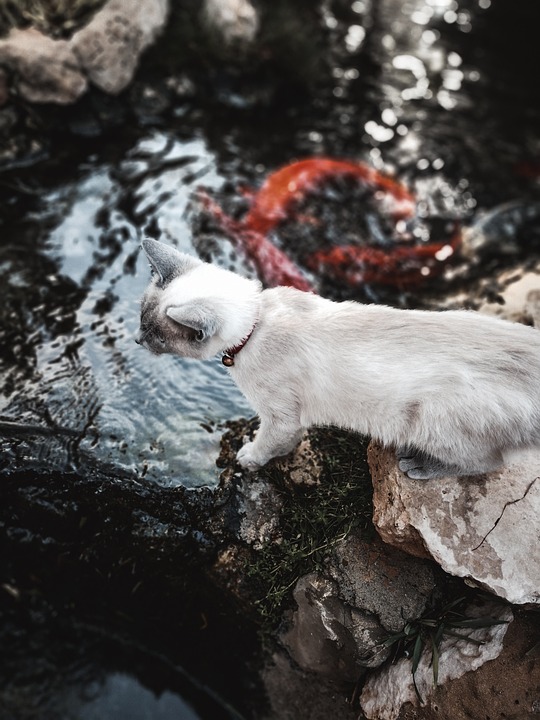Title: Monitoring Fish Tank Ammonia Levels to Prevent Toxicity: A Comprehensive Guide
Introduction: Understanding the Importance of Monitoring Ammonia Levels
Ammonia is a common byproduct of fish waste and decaying organic matter in fish tanks. While it may seem harmless, elevated ammonia levels can be extremely toxic to fish, leading to stress, illness, and even death. Monitoring and maintaining proper ammonia levels in your aquarium is crucial for the well-being of your aquatic pets. In this article, we will guide you on how to effectively monitor ammonia levels and prevent toxicity in your fish tank.
Why Ammonia Levels Matter: The Impact on Fish Health
Ammonia, which is primarily produced from fish waste and uneaten food, is highly toxic to fish. When ammonia levels rise, it can damage fish gills, impair their immune system, and cause stress. Prolonged exposure to high ammonia concentrations can lead to ammonia poisoning, resulting in lethargy, loss of appetite, fin rot, and even death. Monitoring ammonia levels is essential for maintaining a healthy and thriving aquarium environment.
Methods to Monitor Ammonia Levels
1. Ammonia Testing Kits: Utilize a reliable ammonia testing kit to measure the concentration of ammonia in your fish tank. These kits are widely available and easy to use, providing accurate readings of ammonia levels in your aquarium water.
2. Regular Water Testing: Conduct routine water tests to monitor ammonia levels alongside other vital parameters such as pH, nitrite, and nitrate levels. This comprehensive approach helps you maintain a balanced aquatic ecosystem and prevent ammonia-related issues.
3. Observing Fish Behavior and Health: Pay close attention to your fish’s behavior and overall health. Unusual swimming patterns, gasping for air at the water surface, or visible signs of distress may indicate high ammonia levels. Regularly monitoring your fish’s well-being can help you detect potential ammonia-related problems early on.
Preventing Ammonia Toxicity: Best Practices
1. Proper Tank Cycling: Before introducing fish into a new aquarium, ensure you establish a healthy nitrogen cycle. This process involves beneficial bacteria breaking down ammonia into less harmful nitrites and nitrates. Allow the tank to cycle for several weeks, monitoring ammonia levels until they stabilize at zero.
2. Regular Water Changes: Performing routine water changes helps dilute any accumulated ammonia in the tank. Aim for weekly water changes of around 20-25% to maintain optimal water quality. Be sure to use a dechlorinator to remove any harmful substances from tap water before adding it to the tank.
3. Avoid Overfeeding: Overfeeding is a common cause of elevated ammonia levels. Uneaten food decomposes, leading to increased ammonia production. Feed your fish small portions they can consume within a few minutes and remove any excess food to prevent ammonia buildup.
4. Maintain Adequate Filtration: A well-functioning filter is vital in removing excess waste and maintaining water quality. Ensure your aquarium filter is appropriately sized for your tank and regularly clean or replace filter media as recommended by the manufacturer.
FAQs: Your Ammonia Monitoring Questions Answered
Q1. How often should I test my aquarium’s ammonia levels?
It is recommended to test ammonia levels at least once a week, especially during the initial tank setup or when adding new fish. Regular testing helps you detect any fluctuations in ammonia levels promptly.
Q2. What are safe ammonia levels for fish?
Ideally, ammonia levels should be at zero or undetectable in a well-maintained aquarium. Even low levels of ammonia can stress fish and compromise their health.
Q3. Can live plants help control ammonia levels in a fish tank?
Yes, live plants can assist in absorbing ammonia as a nutrient for growth. Including live plants in your aquarium can help maintain ammonia levels within acceptable limits.
Q4. Are there any signs that indicate ammonia toxicity in fish?
Yes, common signs of ammonia toxicity include fish gasping at the water surface, lethargy, loss of appetite, clamped fins, and red, inflamed gills. If you notice these symptoms, take immediate action to address the ammonia issue.
Conclusion: Prioritizing Healthy Ammonia Levels for Fish Well-being
Maintaining optimal ammonia levels in your fish tank is crucial for the health and longevity of your aquatic pets. By monitoring ammonia levels regularly, following proper tank cycling, conducting water changes, and practicing good feeding habits, you can prevent ammonia toxicity and create a thriving aquarium environment. Remember, a healthy aquarium begins with meticulous ammonia monitoring.
Disclaimer: This article is for informational purposes only and does not substitute professional veterinary or aquarium-specific advice. Always consult with an expert for personalized guidance on maintaining your fish tank.









